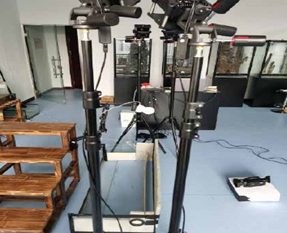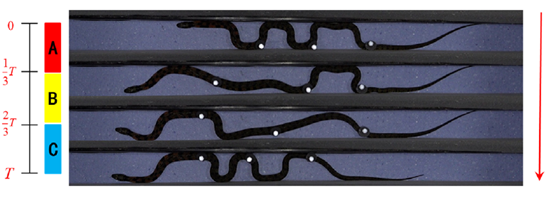Bionic robots imitate the physiological structure or functional characteristics of biological organisms found in nature and are often designed with a specific engineering application in mind. Currently, strong terrain mobility and efficient movement mechanisms are major areas of development for bionic robots. Snakes are legless reptiles and exhibit superior mobility in complex environments, increasing the prospective applications of bionic snake robots.
Researchers at the Changchun University of Science and Technology have studied the contact mechanics of snakes in multi-environments as well as the frictional properties of their scales, providing a basis of design for a snake-shaped robot. The researchers first used the NOKOV three-dimensional motion capture system to analyze the movement of snakes in wet and dry environments, over sandpaper surfaces of different roughness, and on smooth planes. They then obtained a model for snake movement and designed devices to test the frictional contact mechanics of snakes. Four Mars 4H optical motion capture cameras were used to cover the predetermined channel-like test area.

Figure 1 - NOKOV motion capture system and test channel
Due to the kinematic characteristics and body structure of the red chain snake used throughout the experiment, reflective markers were placed at the head, middle, and tail of the snake. These markers were tracked by the motion capture system to collect data on the movement of the snake.

Figure 2 – Red snake with reflective markers attached
In the experiment, the snake was guided to a small hole on the side of the channel and was allowed to enter the channel and move around freely. The locations of each marker on the snake was collected by the cameras and stored in software with other data collected from the same marker. The sampling frequency of the NOKOV infrared optical motion capture lens was set to 180 Hz.
With the extensive data collected by the KOKOV motion capture system, the researchers designed a device to test the kinematic contact mechanics of snakes for further investigation. By combining the collected data on the movement characteristics, contact mechanics, and friction performance of the snake’s scales, a movement mechanism model was generated and analyzed. This model may serve as an accurate reference when designing snake-like bionic robots adapted to complex environments.

Figure 3 - Movement patteren of the red snake through the channel
Bibliography: